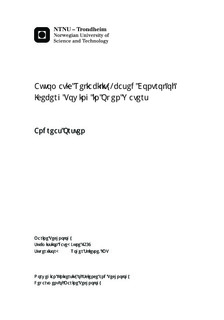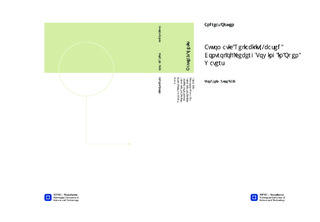| dc.description.abstract | Icebergs pose serious threats to existing and planned offshore structures, vessels, and operations in Arctic waters. In order to eliminate the threat, iceberg handling must be performed. This is typically done by single vessel towing of the iceberg, using a floating towline laid encircling the iceberg in the waterline. Common challenges during towing of icebergs are towline rupture, that the towline slips off the iceberg, or that the iceberg overturns. These are denoted failure modes of iceberg towing operations. Motivated by finding a way to safely alter the iceberg trajectory such that it no longer poses a threat, this thesis discusses automatic reliability-based control of iceberg towing in open waters.A mathematical model for single vessel iceberg towing in the presence of a constant and irrotational ocean current is developed. A reliability index is defined for each failure mode of the towline. The index is based on towline tension measurements and maximum tension limits for the failure mode, for instance the towline rupture tension limit.A line-of-sight guidance and control method is developed in order to tow an iceberg to and along a pre-defined straight-line path in the presence of an ocean current, using a towing vessel and a towline. The method assumes that the iceberg position is measured, and calculates a desired iceberg course angle. Using a reference model and backstepping controller, the towing vessel is positioned in order to apply a tow force in the desired iceberg course direction.Two reliability index-based penalty control schemes are proposed. The first penalizes the commanded thrust when the reliability index is too close to the lower limit. The second penalizes the velocity reference for the tow operation. A limitation to the rate of change of the penalty is proposed for reducing how fast the penalty decreases, in order to achieve a steady velocity reference.The mathematical model and control methods are tested, both in simulations, and experimentally in the Marine Cybernetics Laboratory (MC Lab) at the Norwegian University of Science and Technology (NTNU). Simulations and experiments show that it is advisable to avoid transients in the towline tension, and that the penalty on commanded thrust is not sufficiently effective. Using the line-of-sight method, simulations and experiments show that the vessel tows the iceberg to and along the desired path. A combination of the line-of-sight method and the velocity reference penalty scheme is simulated, and shown to safely tow the iceberg along the path, while avoiding failure modes.A hardware-in-the-loop (HIL) setup, containing position measurement errors, is developed for iceberg towing in the Marine Cybernetics Laboratory (MC Lab), using CS Enterprise I, a 1:50 scaled model vessel. | nb_NO |

